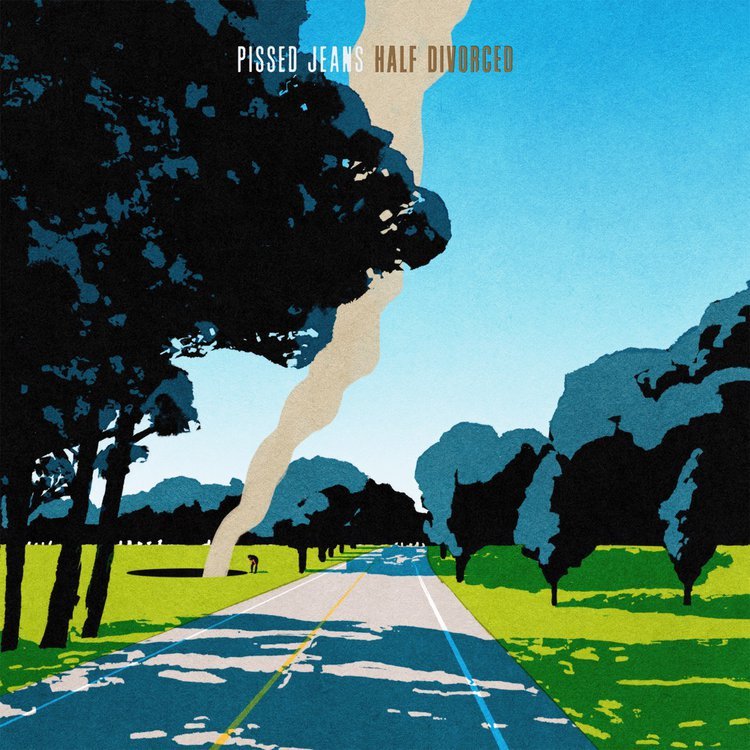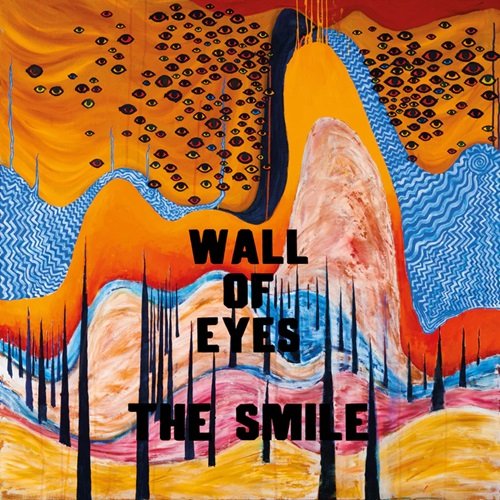Sheepdogs - Changing Colours
The Sheepdogs
Changing Colours
By: Brandon Sims
In February of this year, everybody’s favorite shaggy, Canadian-prairie band, The Sheepdogs, sneakily released an album that seemingly slipped through the cracks of acknowledgment among all major music publications. The most surprising aspect surrounding the lack of media coverage towards the 17-song record is the fact that, while it doesn’t feature any groundbreaking masterpieces, the album as a whole is a quality piece of work with a couple of noteworthy tracks. While the album does little to raise the bar in terms of creativity within the genre, fans of southern-rock and bands like Skynyrd, Crosby, Stills, & Nash, and The Allman Brothers are all but guaranteed to find at least a few tracks on Changing Colours that tickle their fancy.
The album’s opening song and first single, “Nobody”, is a fun and fast-paced southern-blues track with hints of psychedelia embedded throughout its entirety. With a head-bobbing guitar riff, grooving bassline, and a sing-a-long chorus, “Nobody” is a track that will serve as a key piece of the band's arsenal for live performances for the rest of their career.
With the tracks “I’ve Got a Hole Where My Heart Should Be” and “Saturday”, the band reminds us what they love to do most, which is provide hard-hitting chord progressions with intertwined distorted guitar licks and energetic yet simple chorus-lines. While the songs are loaded with energy and a nice mix of power chords, constant guitar leads, and use of the Hammond organ, the tracks as a whole come off as a bit lazy, following a formula that provides nothing new or refreshing to the listener. These particular jams seem best suited for the New-Balance-wearing backyard grill-Dads from a previous generation.
When it comes to “Let It Roll”, the album begins to take a turn to less-familiar Sheepdog approaches to songwriting. The track is littered with sounds and melodies that are derivative of popular works that were most prominent during the latter part of the 60’s. The song exudes reflections of the flower power generation and could just as easily be found on the soundtrack for The Beatles Magical Mystery Tour. Although it is not an original take on the genre by any stretch of the imagination, it serves a refreshing break from the power-chord driven rock tunes that embody the core of the band's discography.
Similarly, the band explores less-traditional hard-rock sounds with “The Big Nowhere”, as they take on the sounds and style most notably popularized by latin-rock bands of the late 60’s and early 70’s. Carlos Santana himself would feel right at home with this song, jamming along on one of signature PRS guitars. Again, while offering little innovation to an established style, “The Big Nowhere” is a sweet sounding mixture of Latin-infused rock n’ roll that serves as one of the more individualistic tracks on the record.
The band continues with their exploration of unfamiliar styles with “I Ain’t Cool”, which opens up with texturized layers of brass-instruments and is followed by a happy-go-lucky piano chord-progression that, along with the horns section, provides for an upbeat and rhythmic tune that makes listeners want to dance and sing along throughout its entirety.
After compiling a number of interesting sounding tracks, The Sheepdogs, unfortunately, climb right back into the saddle of cookie-cutter rock n’ roll songwriting with “You Got to Be a Man.” The song is unimaginative, uncreative, and comes across as flat-out lazy. “You got to be a man, if you don’t, you’re gonna lose,” sings the opening line... Thank you, Ewan Currie, for that brilliant and thought-provoking display of intricate lyricism. It’s no secret that fans of the blues are big on simplicity and minimalism, but this one can be summed up as “just another rock song.” "You Got to Be a Man" is reminiscent of barroom rock played by bands across the world whose set you just can’t wait to finish so you can hear ten-thousand similar songs on the jukebox afterward.
"Cool Down" is a neat little track, as it gives off that old-timey backroom jazz club feel, with a mellow chord progression and some Ray Manzarek inspired keys. While there’s nothing groundbreaking about this particular track, it is a groovy collection of all the sounds fans blues-rock enjoy most about the genre. It’s a solid contribution to the album.
The album truly hits its peak with "I’m Just Waiting for My Time." Finally, The Sheepdogs provide something fresh and intuitively creative with this track. It really is one of the only songs on the record that makes you stop and go “Woah, what is this?” With a mix of flutes, acoustic guitar, a catchy lead and powerful electric guitar chords that punch you right in the face, "I’m Just Waiting for My Time" quickly serves as an instant classic from the Canadian rockers and is easily one their most original songs to date.
"Born a Restless Man" further pays homage to early southern-folk styles with an emphasis on the banjo and a group effort on the vocal section. With no drums throughout the entirety of the song, Overall, this one is a bit of a bore, which is interesting considering they tease its main chorus-line in the final song of the album, "Run Baby Run." The last words sung on the album are “He was born a restless man,” so, they clearly felt this was one of the stronger tracks on the album.
With "Up in Canada", the band does something we don’t see many major acts do, which is give major love to their home country, Canada. The influences from bands like the Allman Brothers are more prevalent than ever in this one, and their evident admiration for the Great White North makes this track one of the more meaningful and tasteful recordings on the album.
The album is capped off with "Run Baby Run", another latin-infused rock jam that simply misses the mark. It’s filled with tons of fan-favorite sounds like bongo drums, metal guitar licks, and progressive rhythm section, but really offers nothing to the listener. It’s one of those songs you listen to once as you go through the album and never think twice about thereafter.
Overall, the same can be said about most of the album. There are very few songs on this record that make the listener stop and want to pay extra attention to. Similarly, in contrast to their last album, Future Nostalgia, over the span of Changing Colours, there’s barely any tracks that make the listener want to immediately share with their friends, which is perhaps why there has been almost no media coverage surrounding the album. For the most part, it seems like the band got together and said: “hey, we need to make a record.” The music itself is highly derivative of a number of great artists that have come before them, but all of that would be fine if the songwriting wasn’t so bland and boring. With the band’s first couple of albums, they gave off an impression like they didn’t care what anyone thought, they were just four dudes from the Canadian-prairies who simply wanted to play the blues and do their thing. With Changing Colours, it seems like they ran out of original things to say.











